Software buyers have changed, but the sales process they experience doesn’t yet match
For decades, software companies have approached business-to-business (B2B) sales mostly by building direct sales forces that pursue big, complex enterprise deals, typically sold into the IT department and carefully monitored by the procurement department. Many companies have become adept at serving these buyers, refining their lead qualification systems, purchasing processes, and licensing schemes over time.
Buyers today, however, have higher expectations, are more agile, and are no longer prepared to make the big upfront commitments that the traditional B2B enterprise software sales process was designed to promote.
At the same time, business buyers want to try new software products fast, without waiting for IT approval, and require a much faster gratification from a business software seller. Additionally, the cloud has democratized the software space, giving access to cutting-edge applications for all client types.
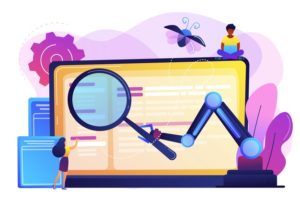
All of this means that direct sales teams alone are not enough to meet the modern software buyer’s evolving needs. While assisted-sales channels still play a big role for B2B sales, they need to be complemented with self-service approaches, for several reasons. On the one hand, self-service answers specific buyers’ needs – especially in the discovery phases – that assisted-sales cannot match. We’ll explore this angle further in the article.
Secondly, sales teams need to be focused on value-add, relationships and customized offers; this is also implying that they need to be relieved from day-to-day, operational tasks that can be done either automatically with the help of technology, or directly by the buyer through self-service mechanisms.
Unfortunately, many software companies haven’t adjusted to this industry shift, and consequently are missing out on a significant number of business opportunities. Let’s explore further the role of self-service commerce and automation in B2B sales.
Are marketing automation investments enough?
Enterprise buyers are not ready to commit to big deals in a jiffy, but they are typically eager to research and determine a shortlist of vendors that may meet their needs. Marketers have recognized this willingness and responded with sophisticated content marketing, lead nurturing, and drip marketing campaigns that drive buyer interaction.
As companies become more adept at marketing automation, their articles, blog posts, email newsletters, social media posts, and other outreach continue to build interest in products and generate new leads for the top of the sales funnel. With sophisticated lead scoring rules, the right leads get passed over to sales, hopefully for a speedy close. If not, they are sent back into the lead nurturing pile – with drip marketing until the prospect is ready for a sales conversation.
Or at least, that has been the story thus far.
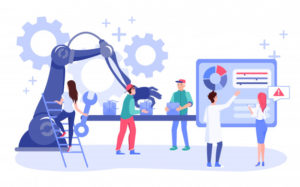
The lead purgatory
The real issue arises when there are prospects that are interested in the product but not yet ready for the traditional direct sales process. Why?
- Even though the prospects are in the right target profile, they may qualify on all dimensions except for one – maybe the budget, which can be smaller for just a market test, for example, or simply not allocated yet for something further down the line.
- Some are smaller customers but are interested in trying out an enterprise-class solution.
So, they make an almost-ideal customer profile, but not exactly. You can see that in these cases, even the most successful marketing automation serves primarily to create a sort of “Lead Purgatory.”
Here, large groups of leads that are interested in the product but not yet ready for the traditional direct sales process can linger indefinitely. The more successful a company’s marketing efforts are, the more marketing qualified leads (MQLs) are delivered to the direct sales team. But these MQLs that do not qualify for assisted sales get shuffled back into Lead Purgatory – that dreaded gap between marketing and sales.
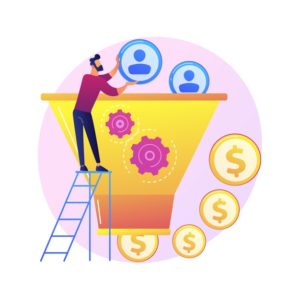
Having already consumed all the marketing content available to them and reached the end of their free trial period (if one is available), these prospects now get nothing from the software company but sales calls, for which they are a poor fit.
Ultimately, leads fall into purgatory not because they’re disinterested or because the marketing messages didn’t work, but because the sales process is pushing them down a path they’re not prepared to take. And working harder is not the solution.
As marketing and direct-sales teams ramp up their efforts, the gap between sales and marketing grows larger, and more leads end up stuck in the Lead Purgatory. Investing heavily (and exclusively) in marketing automation and assisted sales sets up a cycle of failure for companies and prospective buyers alike.
To close the gap, software companies need to disrupt their outdated sales model and adopt a new approach to converting leads to customers.
How self-service closes the gap
To convert more leads into customers, software companies need to embrace a new and more flexible B2B sales process. Rather than shoving “unqualified” leads back into Lead Purgatory, software companies need to ensure the sales process is flexible enough to accommodate all kinds of prospects.
Online self-service eCommerce is an ideal way to empower leads to close the gap between marketing and sales and become customers on their own terms. An online self-service channel gives the individual software buyers the opportunity to make their own decisions, outside of a direct sales relationship. By automating this long tail using self-service commerce tools, companies give buyers the opportunity to choose what to buy, how much, at what price point, and for how many users.
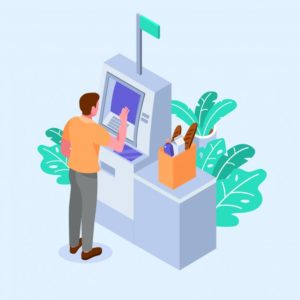
When commerce is integrated with license or subscription management capabilities, clients can also start, end, upgrade, downgrade, or otherwise modify any aspect of their product or subscription deal at any point. With an active self-service channel, leads are free to meet their own needs and become customers without working directly with anyone from the organization – unless they want to.
Essentially, self-service gives buyers a free ride out of Lead Purgatory. A strong marketing automation and lead-nurturing program that stimulates ongoing customer interest is the ideal foundation for a self-service channel, which must support free trials, sophisticated usage analytics, and easy-to-use tools for configuring account elements. In the self-service channel, products need to be capable of adapting to customer needs. An effective self-service channel allows monetization of more leads.
Revolutionize customer interaction with an online self-service channel
By creating a self-service sales channel for customers and aligning marketing automation with commerce, companies can rescue their leads from purgatory.
Automating that long-tail and introducing a new self-service channel brings a number of obvious benefits, like more revenue and less churn. But there are other, organization-wide benefits – such as the addition of a whole new type of sales leads – that also merit close examination.
Let’s look at some distinctive benefits of self-service and why each is important.
- Increase customer satisfaction
Being able to try products and upgrade on their own is the ideal outcome for many B2B buyers. Driven by a desire to fully understand a product before committing to it, these buyers are immensely satisfied by being able to interact on their preferred terms or make desired changes to their trials or accounts.
Being able to access sophisticated self-service tools can dramatically increase these buyers’ satisfaction, which in turn can prompt their interest in converting and spending more, increasing client lifetime value. This autonomy will also appeal to a global audience, as it keeps their buying experience free of time-zone restrictions and is not conditioned by support teams.
- Turn marketing into a revenue stream
As companies invest more in lead nurturing and marketing automation, they need to avoid spending big bucks on marketing only to keep loading up Lead Purgatory. By providing more avenues for leads to become customers, the self-service channel helps marketing pay for itself in a way that it couldn’t before.
Instead of all of the marketing budget simply going towards generating leads, which depend also on the efficiency of the sales team, part of it serves to generate usage and revenue, helping justify additional marketing expenditures in the future. Clearly, it requires additional investment in commerce automation, which will, in turn, also benefit the assisted sales deals once they are onboarded – a win-win situation for all.
- Reap the benefits of usage data across the organization
Self-service produces more of that “holy grail” for marketers: data. Usage data from trials helps marketers send better messages to leads that are more in line with what people actually do, not just what they click on. This refines marketing messages and increases the likelihood of future conversions from leads to revenue.
But usage data helps in other areas beyond marketing. Knowing how customers really use products can revolutionize product design, packaging, and pricing, even allowing for automatic adjustments in pricing or feature sets based on real-time buyer behavior. Companies can let conversion rates drive pricing strategy and feature packaging.
By basing their product pricing and packaging on a well-developed understanding of how customers currently use the product, companies can improve conversion rates.
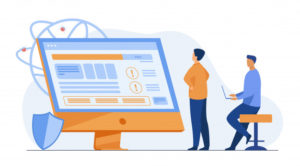
- Eliminate channel conflict and empower teams
In too many organizations, the marketing, commerce, and sales departments are siloed – in part because no self-service channel exists to unite them. By closing the gap between departments and providing data everyone can use, a self-service channel can eliminate channel conflict and get organizations working together more seamlessly.
Marketing no longer needs to fight with sales over who “owns” a lead. Instead, the self-service channel fills the gap between teams and operates seamlessly to nurture customers until the lead self-converts or is ready for higher-level, more customized, assisted-sales support. In this way, the self-service channel not only fills a gap for customers, but for the organization as well, creating an “infinity loop” together with assisted sales, and making sure they work in synergy to grow a customer, rather than letting them fall through the gaps.
- Upgrade sales with UQLs
Along with streamlining internal processes, the self-service channel introduces an exciting new tool for the sales team: usage-qualified leads (UQLs). These are highly qualified leads who are interested in a product not simply based on vague promises about what it can do, but on actual usage and interaction over time. This usage data in turn helps new, more collaborative sales representatives design unique customer plans based on actual usage.
Experience with the product or service not only improves the quality of leads going into the sales organization, but also the ability of sales reps to serve those leads. This provides a clear path to successful ongoing relationships with UQLs.
Self-service commerce is a win-win for businesses and their customers
B2B sales for software companies are evolving and changing, and it’s clear that the outdated sales model traditionally relied on is no longer serving companies or their customers as well as either group would like. Moving to a self-service channel with a more flexible approach that accommodates a wider variety of prospects and their desired outcomes may be the most favorable step to adapt to industry trends.
This new approach could save potential customers from Lead Purgatory and empower them to become buyers on their own terms, by closing the gap between marketing and sales so they can make their own decisions (with support always available if and when they need it). For the eCommerce software company, a self-service program could build customer loyalty, increase revenue, and streamline internal operations. At the same time, self-service will relieve the sales teams from day-to-day operational tasks, leaving them more time and resources to focus on what really matters for their clients: outcomes and customized offers.
Both parties benefit from a more modern approach, so maybe it’s time to make this move.
Want to learn how to manage conflict between your sales channels to grow revenue?
Then don’t miss this session with Subscription Insider, as it identifies if your organization is not managing your different sales channels effectively.






